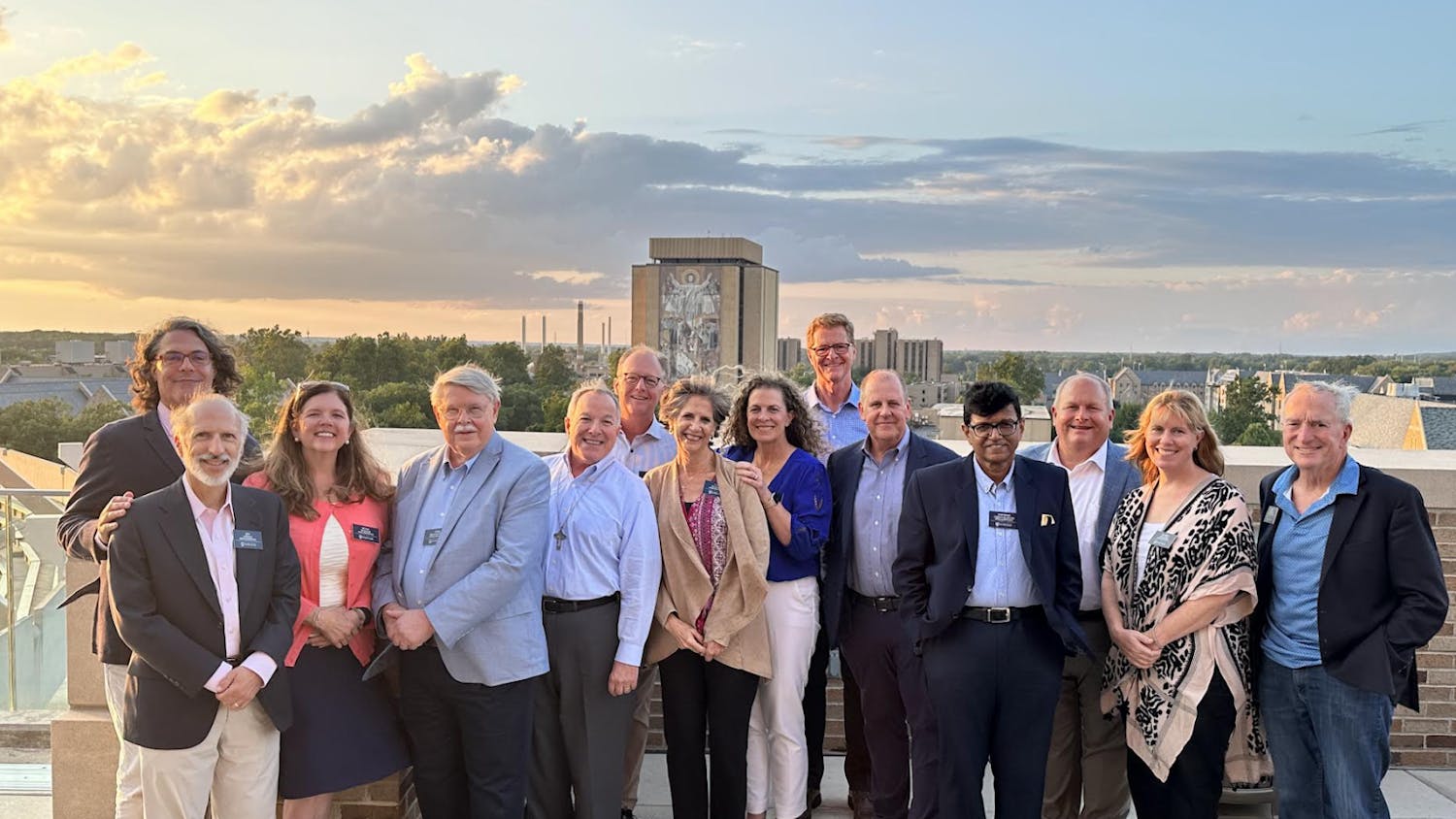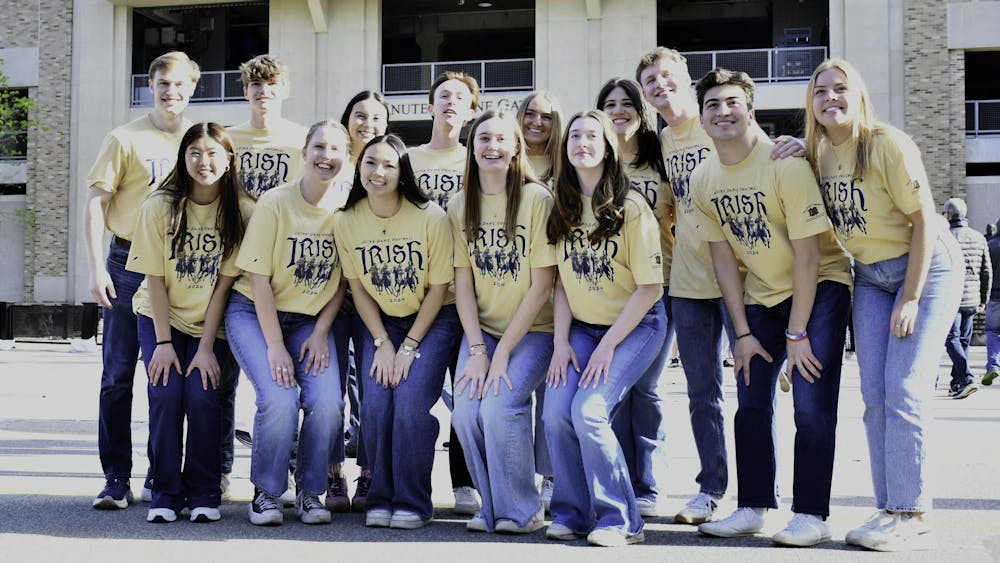The Nanovic Institute for European Studies hosted keynote speaker Mary-Kay Gamel as part of its graduate student conference “Classics and/in Performance” in McKenna Hall last Friday morning. Her lecture, titled “Greek Drama: A Musical Theatre,” explored the integrality of music to ancient Greek dramas and stressed the desirability, both for authenticity and for generating meaning, of incorporating music into contemporary theatrical adaptations of those plays.
Gamel, professor emeritus of classics, comparative literature and theatre arts at the University of California, Santa Cruz, said her career as a literary classicist was transformed after a “call from Dionysus,” in the form of a petition from an undergraduate theatre major, persuaded her to focus on translating, adapting and staging plays.
Performance studies of the texts generate a unique analytical lens for those works, Gamel said.
“You can find out things about Greek drama by doing productions that you can’t find out any other way,” she said. “And also, it’s a lot of fun.”
Gamel said music is an often overlooked component of classical dramas. References to music in works urge characters to express themselves in song. Gamel said she hopes that contemporary productions will treat textual allusions to music literally.
“Song and dance are not optional frills added to ancient Greek drama. They are an essential part of the meaning and effect, intellectual and emotional,” Gamel said. “Song and dance allow the larger-than-life characters to express important ideas and feelings more powerfully, intricately, and effectively than in spoken dialogue. No one would think about doing a production of Verdi’s ‘Don Carlo’ or Sondheim’s ‘Assassins’ without singers and musicians. Why do we continue to accept music-less Greek drama?”
Gamel’s address was structured around video clips from modern adaptations of plays such as ‘Prometheus Bound’ and ‘Orestes,’ which employed differing methods to pursue authenticity to the original texts. One based its dances on ancient artwork and costumed its cast in traditional Greek masks; others used chorus lines, hip-hop and tunes borrowed from Beyoncé. Gamel’s productions favored the latter approach.
“Here’s the Catch-22 of historical authenticity: the closer a modern production approaches the formal (practices) of its original production, the stranger it will be to a modern audience, and the stranger the effect on a modern audience, the [broader the] margin of their reactions will be from those of the original audience,” Gamel said.
To narrow the reaction gap between audiences, a production might pursue “inductive authenticity,” combining tradition and innovation to “lead the audiences to particular responses,” she said. The innovation that this approach allows is conducive to the development of another type of authenticity, one that clarifies the art of adaptation as a project of balancing tradition and development.
“My justification for making adaptations is that every ancient Greek playwright did exactly the same. They changed the myths they inherited and sometimes even explicitly criticized their predecessors’ choices,” Gamel said. “This kind of authenticity … is called ‘expressive authenticity’ — the idea that every art work, especially great, complex ones, have emergent value, ideas and possibilities in them that under the right circumstances can and should be expressed. We’re not trying always to capture the original meanings, but to find new ones.”
Gamel said the process of adaptation can also discover the pertinence of ancient texts to modern social problems, and utilizing modern music can help to obviate the texts’ contemporary relevancy. The idea of relating Greek dramas to specific communities is part of its history.
“Another kind of authenticity I call ‘structural authenticity’ involves evaluating the connection between the performance, its music, the theater in which it’s being performed and the community for which it’s being performed,” Gamel said. “The Festival of Dionysus was a community theater, sponsored by the state, with average citizens performing the roles.
“There is a very strong connection to democracy here — you don’t have to be an aristocrat to have artistic ability and training. Theatrical productions at modern community theaters, including those on university campuses, can raise issues important to their community.”
Whichever musical styles a production engages to articulate meaning and to pursue these various strains of authenticity, Gamel said what matters principally is that contemporary adaptations use music at all.
“Music is one element, I think, which we can believe connects the modern and the ancient world,” Gamel said. “The nature of the music may be different, but the aim is the same: to make clear and powerful the feelings and the issues in this emotional medium, which both ancient and modern audiences can understand. The result can be fabulous.”













